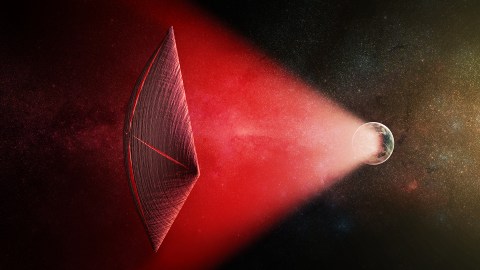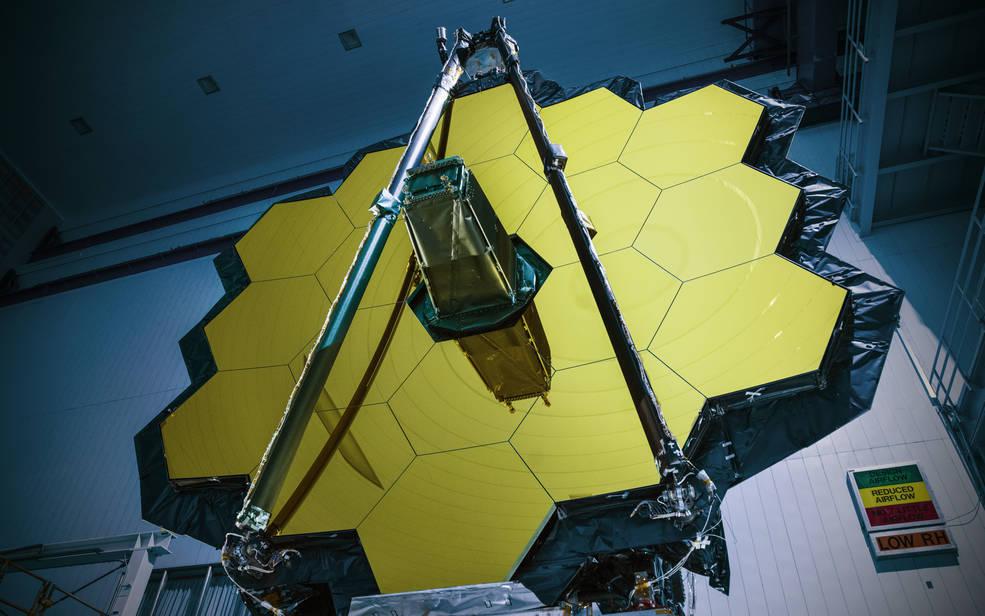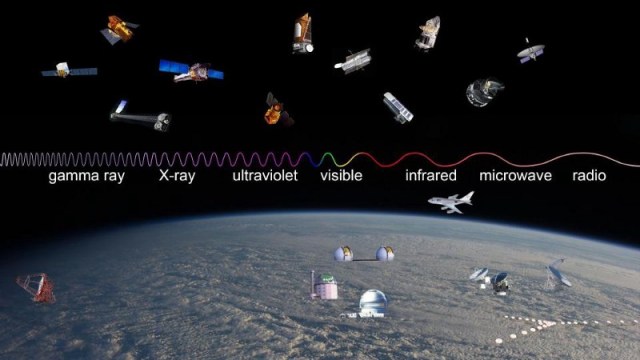Enigmatic Deep Space Flashes Could Be Powering Alien Spaceships, Say Harvard Scientists

Two Harvard astronomers published a paper with an imagination-grabbing explanation of Fast Radio Bursts (FRBs), mysterious space signals that were first observed in 2007. These bursts are likely to be coming from galaxies billions of lights years away and have enormous energy to be visible from such a distance.
The powerful bursts are millisecond-long and while only 18 of them have been recorded so far, scientists think there could be an estimated 10,000 FRBs speeding through the cosmos every day. Previous theories proposed their sources to be newborn neutron stars or even nebulas powered by pulsar winds. But no concrete originator of the radio waves has yet been identified. This led astronomers at the Harvard-Smithsonian Center for Astrophysics to theorize that the signals could potentially be coming a device that someone created.
“Fast radio bursts are exceedingly bright given their short duration and origin at great distances, and we haven’t identified a possible natural source with any confidence,” said Avi Loeb, theorist at the Harvard-Smithsonian Center for Astrophysics. “An artificial origin is worth contemplating and checking.”
And who would make an “artificial” device in distant space? Yes, it’s aliens.
“We examine the possibility that FRBs originate from the activity of extragalactic civilizations,” said the scientists.
Check out this video from Space.com for some visuals of the idea:
What are some of the clues that point to an unnatural creation for these signals? For one, they are way too hot and bright. According to George Dvorsky at Gizmodo, who interviewed the theorists, the beams have abrightness temperature of 1037 degrees. The number speaks to the amount of microwave radiation of a space object.
Other reasons to suspect aliens – the radio bursts repeat but in a rather unpredictable way and are concentrated around a specific frequency. Both of these factors are not consistent with the neutron star/pulsar explanation of FRBs.
What the Loeb and his co-author Manasvi Lingam suggest may be happening is quite ingenious. They think the bursts could actually be energy beams that are emanating from giant transmitters. Their purpose? To transport spaceships made by advanced alien civilizations at amazing speeds. Imagine solar space vehicles equipped by light sails that absorb the transmitted radio bursts and zip forward through the cosmos.
The scientists went as far as figuring out the feasibility of creating such a device and while the technology necessary is not something humans can yet muster, more sophisticated spacefaring beings could make it happen. The transmitter would have to be a solar-powered and water-cooled contraption twice the size of Earth, concluded the astronomers. We are talking 15,000 miles in length. The power this would generate could propel payloads of a million tons, which their statement compares to “20 times the largest cruise ships on Earth.”
“That’s big enough to carry living passengers across interstellar or even intergalactic distances,” said Lingam.
To an observer on Earth, the transmission of the radio burst would appear as a brief flash due to relativity. The spacecraft would receive the burst of energy through mirrors that gather the sunlight. The resulting acceleration of the ship could approach the speed of light.
While Loeb readily offers that their work is speculative, he does think there is merit in such thinking.
“Science isn’t a matter of belief, it’s a matter of evidence. Deciding what’s likely ahead of time limits the possibilities. It’s worth putting ideas out there and letting the data be the judge,” explained Loeb.
The scientists also suggested that a way to study the idea further would be to focus on repeated FRBs whose origins cannot be attributed to “cataclysmic astrophysical events”.
You can read their proposal, published in Astrophysical Journal Letters, here.
As far as light sail technology, NASA is planning to test what it calls a Near Earth Asteroid Scout, a sunlight-powered spacecraft, in 2018.
Cover photo:
An artist’s illustration of a light-sail powered by a radio beam (red) generated on the surface of a planet. The leakage from such beams as they sweep across the sky would appear as Fast Radio Bursts (FRBs) Credit: M. Weiss/CfA





